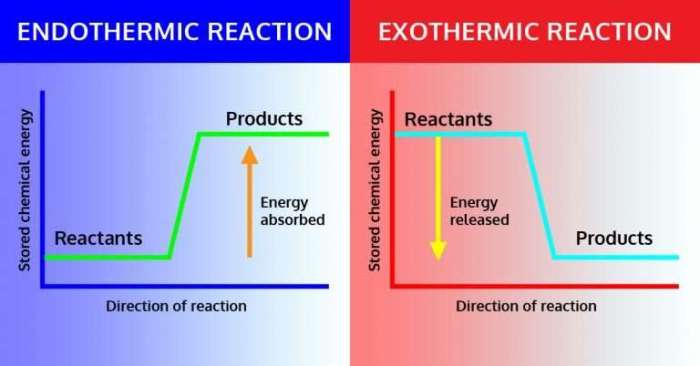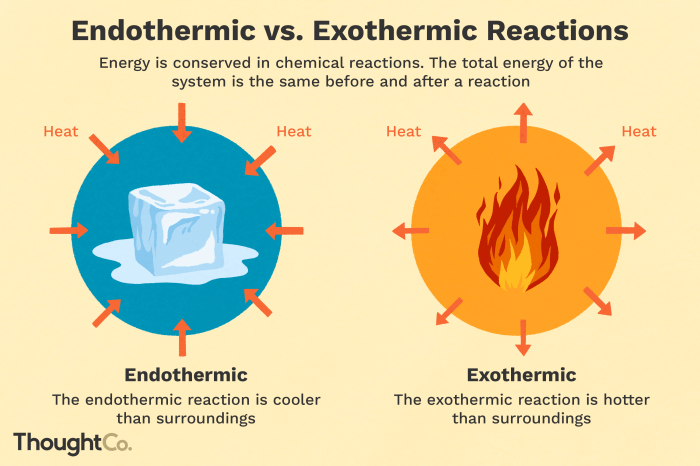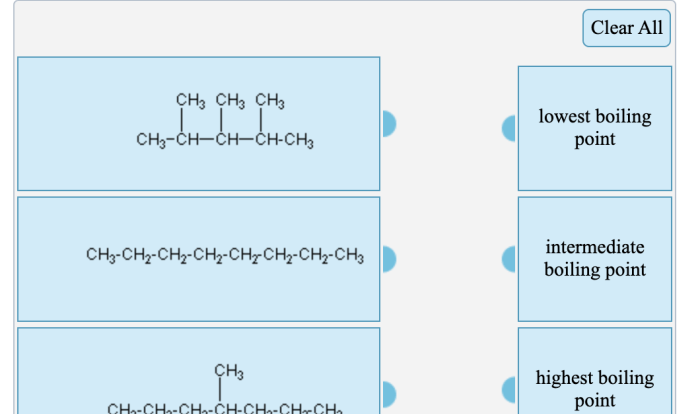Classify the phase changes as endothermic or exothermic – In the realm of physical chemistry, the classification of phase changes as endothermic or exothermic processes plays a pivotal role. This distinction, which hinges on the enthalpy changes accompanying these transformations, provides a deeper understanding of the energy dynamics involved in matter’s various states.
Phase changes, encompassing processes such as melting, freezing, vaporization, and condensation, involve the transition of a substance from one phase to another. These changes are accompanied by either the absorption or release of energy, dictating their classification as endothermic or exothermic, respectively.
Phase Changes: Classify The Phase Changes As Endothermic Or Exothermic

Phase changes occur when a substance undergoes a transformation from one state of matter to another, such as from a solid to a liquid or a gas. These changes are accompanied by a change in the substance’s physical properties, such as its density, volume, and shape.
There are three main types of phase changes: melting, freezing, and vaporization. Melting occurs when a solid changes to a liquid, freezing occurs when a liquid changes to a solid, and vaporization occurs when a liquid or solid changes to a gas.
Endothermic and Exothermic Changes, Classify the phase changes as endothermic or exothermic
Phase changes can be classified as either endothermic or exothermic. Endothermic changes are those that require energy to occur, while exothermic changes release energy.
Melting and vaporization are endothermic changes, as they require energy to break the intermolecular bonds that hold the molecules in their solid or liquid state. Freezing and condensation are exothermic changes, as they release energy when the molecules form stronger bonds in their solid or liquid state.
Classifying Phase Changes
The following table classifies different phase changes as endothermic or exothermic:
| Phase Change | Type |
|---|---|
| Melting | Endothermic |
| Freezing | Exothermic |
| Vaporization | Endothermic |
| Condensation | Exothermic |
The reasoning behind each classification is as follows:
- Melting requires energy to break the intermolecular bonds that hold the molecules in their solid state.
- Freezing releases energy as the molecules form stronger bonds in their solid state.
- Vaporization requires energy to break the intermolecular bonds that hold the molecules in their liquid or solid state.
- Condensation releases energy as the molecules form stronger bonds in their liquid or solid state.
Applications of Phase Changes
Phase changes have many practical applications in everyday life. For example, the melting of ice is used to cool food and drinks, and the vaporization of water is used to generate steam for power plants.
Other applications of phase changes include:
- The freezing of water to create ice for skating rinks and hockey rinks.
- The vaporization of water to create steam for steam engines and turbines.
- The sublimation of dry ice to create fog effects in movies and plays.
FAQ Resource
What is the key difference between endothermic and exothermic phase changes?
Endothermic changes absorb energy from the surroundings, while exothermic changes release energy into the surroundings.
Can a phase change be both endothermic and exothermic?
No, a phase change can only be classified as either endothermic or exothermic based on the overall energy change.
What are some examples of endothermic phase changes?
Melting, vaporization, and sublimation are all endothermic processes.



